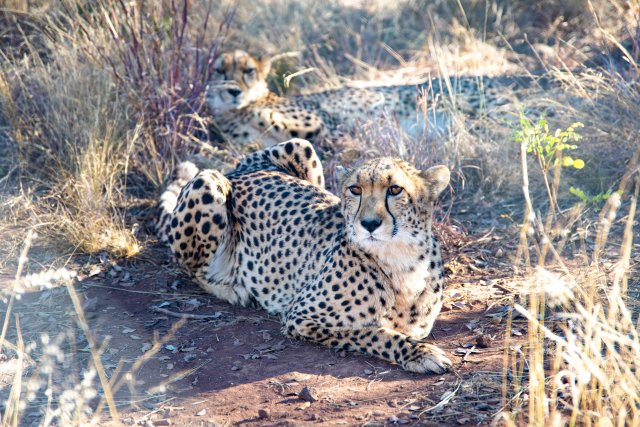Cheetahs in Captivity: The Fascinating Lives of Cheetahs Living in Captivity
Cheetahs in Captivity: The Fascinating Lives of Cheetahs Living in Captivity
When we think of cheetahs, we often picture them roaming the vast African savannah, chasing down their prey with incredible speed. However, there is another side to these magnificent creatures that many people are not aware of – cheetahs living in captivity. In this article, we will explore the fascinating lives of cheetahs in captivity, shedding light on their unique behaviors, conservation efforts, and the challenges they face.
The Role of Captivity in Cheetah Conservation
 One might wonder why cheetahs are kept in captivity when they are perfectly adapted to their natural habitat. The answer lies in the crucial role that captive populations play in conservation efforts. Cheetahs face numerous threats in the wild, including habitat loss, poaching, and human-wildlife conflict. Captive breeding programs provide a safety net for the species, ensuring their survival and genetic diversity.
One might wonder why cheetahs are kept in captivity when they are perfectly adapted to their natural habitat. The answer lies in the crucial role that captive populations play in conservation efforts. Cheetahs face numerous threats in the wild, including habitat loss, poaching, and human-wildlife conflict. Captive breeding programs provide a safety net for the species, ensuring their survival and genetic diversity.
One successful example of a captive breeding program is the Cheetah Conservation Fund (CCF) in Namibia. The CCF has been working tirelessly to breed and reintroduce cheetahs into the wild. Through their efforts, they have managed to increase the wild cheetah population in Namibia from 2,500 to over 4,000 individuals. This success would not have been possible without the captive cheetahs that served as a source for reintroduction.
Behavioral Adaptations in Captive Cheetahs
Living in captivity brings about unique challenges for cheetahs, as they are highly specialized hunters in the wild. However, these incredible animals have shown remarkable adaptability in captivity, both physically and behaviorally.
Physical Adaptations
Cheetahs in captivity often have access to a consistent food source, which can lead to weight gain and reduced agility. To combat this, many captive facilities provide enrichment activities to stimulate the cheetahs’ natural hunting instincts. These activities include puzzle feeders, simulated prey, and even running courses to encourage exercise and maintain their physical fitness.
Behavioral Adaptations
Cheetahs in captivity exhibit a range of behaviors that differ from their wild counterparts. One notable behavior is their increased sociability. In the wild, cheetahs are solitary animals, but in captivity, they often form social groups. This socialization provides mental stimulation and helps alleviate stress, contributing to their overall well-being.
Another interesting behavioral adaptation is their ability to form bonds with their human caretakers. Cheetahs are known for their docile nature, and many individuals in captivity develop strong bonds with their handlers. This bond not only enhances the cheetahs’ quality of life but also facilitates veterinary care and research.
Challenges Faced by Cheetahs in Captivity
While captivity offers numerous benefits for cheetahs, it also presents several challenges that need to be addressed to ensure their well-being.
Genetic Diversity
Cheetahs have a limited genetic pool due to a population bottleneck thousands of years ago. In captivity, this limited genetic diversity becomes even more pronounced, leading to potential health issues and reduced reproductive success. To combat this, captive breeding programs carefully manage the genetic makeup of their populations, ensuring that individuals are paired to maximize genetic diversity.
Stress and Enclosure Size
Cheetahs are naturally wide-ranging animals, and confinement in small enclosures can lead to stress and behavioral problems. To mitigate this, many captive facilities provide large, naturalistic enclosures that mimic the cheetahs’ natural habitat. These enclosures allow the cheetahs to exhibit their natural behaviors, such as running and climbing, reducing stress and promoting their overall well-being.
Summary
Cheetahs in captivity play a vital role in conservation efforts, ensuring the survival and genetic diversity of the species. They exhibit remarkable adaptability, both physically and behaviorally, in response to the challenges of captivity. However, it is crucial to address the challenges they face, such as genetic diversity and enclosure size, to ensure their well-being. By understanding and appreciating the fascinating lives of cheetahs in captivity, we can contribute to their conservation and ultimately secure a future for these incredible animals.
Read More About Cheetah’s From Wikipedia



